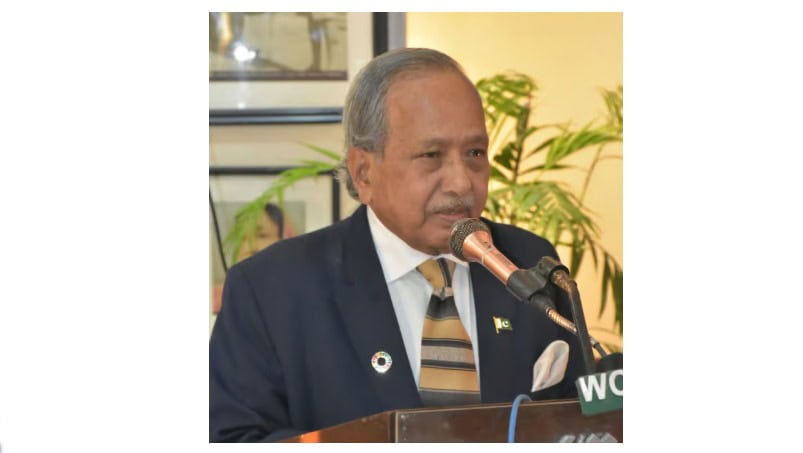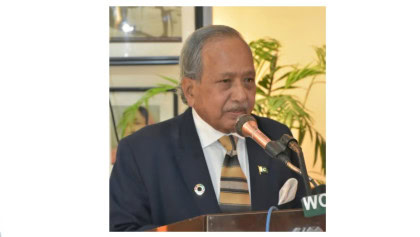(Part-2)
By Amb. Salahuddin Choudhry
Major factors responsible for high population growth are high fertility, low contraceptive prevalence ratio, high unsolved need of family planning, decreasing mortality, customs of early marriages, son preference, illiteracy especially of women and lack of women empowerment, religious restrictions, beliefs, customs, traditions and lack of recreational activities.
We in Pakistan remain unprepared for rising challenges of uncontrolled growth in population that raises poverty, leaves strain on resources, increases unemployment and terrorism.
Family Planning Programs in countries of SE Asia were pretty successful: the best results by JAPAN followed by China, Korea, Taiwan, and Indonesia. The most important factor has been the strong political will to curb population growth. First country to experience a revolution in reproductive behavior was Japan with below replacement level fertility by 1960. This was accomplished by massive postponement in age of marriage and rapid reduction in marital fertility.
That high fertility was bad for our country and for the family. In Asia, such programs did not fully
develop or succeed where they met religious opposition (as in the Philippines), politically expressed ethnic opposition (as in MALAYSIA), or feudal social structures (as in PAKISTAN). Similar programs were later developed in much of North Africa, in Egypt, Morocco and Tunisia.
Majority of countries made dramatic economic breakthroughs in the past 30 years drastically reducing the average fertility rate. Iran made it from 6.53 to 1.96 in a span of 30 years, Bangladesh down from 6.92 to 2.1 during a span of forty years, while Korea (1.21), China (1.65), Hong Kong (1.23) and Taiwan (1.1) made similar impressive reductions. Regrettably, Pakistan has a very high fertility rate of 3.73 for the past six years. If not immediately addressed, this single factor could negate every effort Pakistan may make to break away from poverty, hunger, disease and illiteracy.
In the late 1980s, Iran’s supreme leader issued fat was (religious edicts) making birth control widely available and acceptable to conservative Muslims. Under the new decrees, contraceptives could be obtained for free at government clinics, including thousands of new rural health centres. Health workers promoted contraception to increase the gap between births and to reduce maternal and child mortality. Between 1996 and 2016, the average age of marriage for Iranian females increased from 19.8 to 23 and from 23.6 to 27.4 years for males.
Interestingly, in case of Bangladesh, it adopted a community-based approach to population planning. It was based on recruiting married, literate village women trained in basic community health and family planning going door-to-door dispensing contraceptive pills and condoms. Local villages had credibility among suspicious and very religious population. Importantly, giving high priority to girls’ education delayed marriages and gave women higher control in their lives.
Pakistan’s population predicament.
We in Pakistan could not benefit from religion as a vehicle for change and action. We failed tomake population control policies to integrate communities. There was neither easy free access to contraceptives, nor was the media utilized for public awareness and guidance.
There were no innovative incentives created for hose who adhered to a two-child policy. Most importantly, till recently, no steps were taken to raise the marriage age for girls to ensure 16 years of education as provided for in the Constitution.
Our much-needed break from poverty and disease is critically dependent on the ability to bring down fertility rate and educating girls. Failure to implement the measures would be a sure recipe for a continued addiction to the IMF besides keeping our children vulnerable to stunted growth, crippling impacts of polio, acquiring HIV by reused syringes and remaining illiterate.
According to UN projections, the Pakistan population will grow to over 380 million by the year 2050, surpassing the United States, Indonesia, Brazil, and Russia to become the world’s third largest country behind India and China. At highest population growth rate for any large Asian nation, Pakistan will surely experience dramatic declines in per capita availability of arable land, water, and forest resources.
Pakistan, being one of the high-fertility countries with a large proportion of young adults and children, had a population of 33 million in 1950 and its rank was 14th in the world but today, its population has reached around 220 million making Pakistan 5th most populous country of the world.
Due to a high increase in the population, Pakistan is facing serious challenges like shortage of water, electricity, jobs infrastructure, public transportation, health, education law and order, and other social issues are prevailing in the society. So, over population is a big threat for Pakistan.
Efforts in the past to introduce family planning schemes and greater access to contraceptives met with little success. Due to a lack of foresight and dilly-dallying in implementation process of policies by successive governments, along with societal stigma and resistance from right-wing sections each time the topic of birth control was brought up; and the problem carried on. Regrettably, about half of all married women in the country do not use modern contraceptive methods, resulting in 3.8m unintended pregnancies each year. Early marriages, and the lack of knowledge in contraception and birth spacing, have worsened the position.
From 1993 to 1998, Pakistan ran a successful family planning program which was instrumental in reducing fertility rates and increasing contraceptive prevalence. The key element of the program was the recruitment of trained Lady Health Workers (LHW) to provide primary health care and family planning services to women at community level. The LHW were pivotal in expanding family planning services to the poor and educating them on the available methods. However, from 2000 onwards, successive governments’ attention to family planning programs started to reduce.
Following the Bangladeshi experience, as most experts say, we got to take effective steps to control population explosion, like:
1. reforming education system, especially in relation to family planning;
2. lifting restriction on TV and print media adverts of condoms and pills to effect family planning initiatives; only decent educational adverts, not erotic and obscene.
3. creative or Symbolic visuals of condoms will help population control and STD prevention.
4. promoting tolerance like in a secular society.
5. compelling religious groups NOT to scuttle Government Policy& Directives about family planning.
6. passing a comprehensive Law to make Population/Family Planning compulsory.
Some seven years ago, that is mid-2018, a population control and action plan was formulated which were to be presented at the National Task Force, established on the advice of the Supreme Court and as per directives of the Council of Common Interests (CCI).
The documents prepared then – as initiated during later part of the then Govt. – covered all four provinces, AJK and GB and were to be implemented throughout the country in consultation with UNFPA: the draft called the scheme “Pakistan Population Vision 2018-2030”.
The Targets were set in the Plan – wherein the process were to be started – which remains to be seen on the ground NOW. According to the draft plan, the fertility rate or growth rate would be reduced from 3.6% births to 2.1%; the contraceptive prevalence rate increased to 70% and the child & maternity mortality rates substantially brought down; that is, decreasing population growth rate to 1.5 percent.
It is encouraging to see population & family planning again getting space on the new/current government’s policy agenda. Yet, the scenario as it stands is grim; we cannot afford to laze & lax and have to move forward. Issues relating to family planning and reproductive health services are complex and intertwined. Solutions also need to be comprehensive and integrated. The Government of Pakistan along with UNFPA and a host of private NGOs are working on these issues and many others, to contain the population. Population stability may eventually be achieved. BUT, IT IS TIME GOVT. ACTED FAST with the set political will; It’s time we all acted as a nation. Curtailment & containment is the BIGGEST URGENCY.
The Task Force on Population and Family Planning has to embark on developing a strategy for controlling population growth – nay, pop. explosion – and to guide its implementation. The Task Force, spearheaded by the Center, must act hand in hand – as they have NO choice – with all provincial Chief Executives alongside the newly constituted governing bodies. Given the devolved governance structure in Pakistan, with the 18th Amendment in place, full force is to be applied by all & sundry concerned – no malice but friendship – to ACT IN UNISON WITH COURAGE AND DISCIPLINE IN POLICY FORMULATION AND ACTION PLAN toward comprehensive family/population planning …… the Task Force motto being “WE SHALL DO IT”; no shying away; else, ‘pop-boom’ is going to be like corona exploding without sound and eating away every cell of our society !! Strong & comprehensive LEGISLATION is called for making max TWO babies to a COUPLE Plan effective.
And, mind you ALL, it is the WOMEN/Mothers who can and will have to take the lead – the SECRET lies with them !
The author is a Rotarian and former senior career diplomat. He is available on saladinch168@gmail.com and @SaladinCh
















